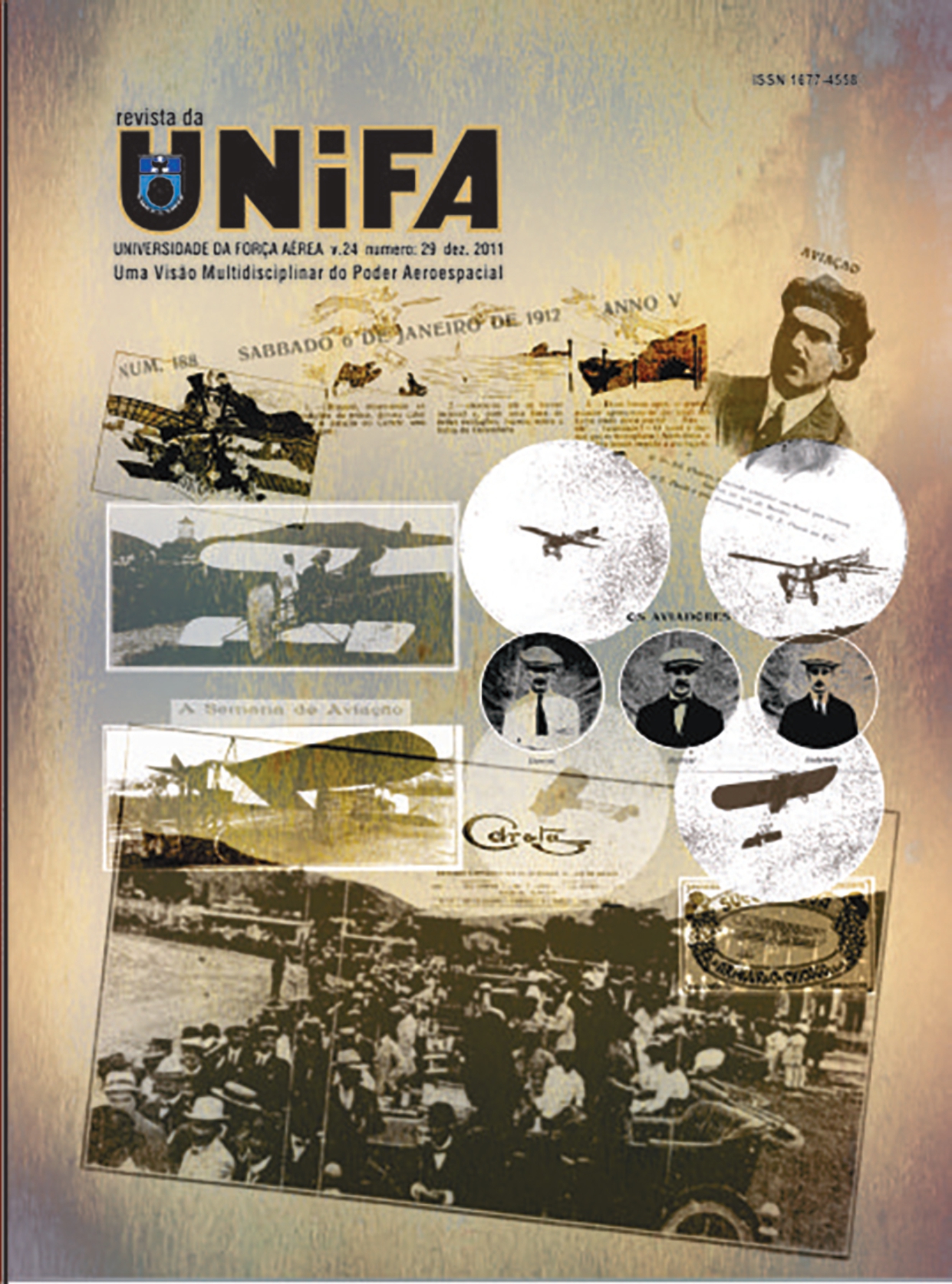Situational Awareness:
The Use of HUD
DOI:
https://doi.org/10.22480/revunifa.2011.24.717Keywords:
Situational Awareness, Accuracy, Flight Simulator, Aerial NavigationAbstract
This research aimed to identify factors related to the use of Head-Up Display (HUD) which influence the performance of pilots in procedures ILS CAT I, with low limits of visibility and height decision. To achieve this goal, it was developed an experiment in a flight simulator and interviews with pilots involved in the training with EMB-190 aircraft of an airline company, and also in a squadron of the Air Force responsible for authorities transportation. The experiments in the simulator indicated that in manual flight the HUD reduces the lateral error, the vertical error and the speed variances. From the analysis of positions of the pilots interviews, it was identified that the most valued feature in the HUD is the fact of having access to essential data such as: attitude, energy (velocity and acceleration), altitude and course deviations at the same time when looking outside toward the displacement of the aircraft. This HUD interface feature improves the quality of pilotage and reduces the time for tracking data, facilitating the transition from the instruments to the visual external references. The results led to conclude that the use of HUD enables operations with low limits of ceiling and visibility by increasing the accuracy of the trajectory and the pilot situational awareness.
References
Endsley, M. R.; Garland, D. J. Situation
Awareness: Analysis and Measurement. 1. ed.
Mahwah, New Jersey: Lawrence Erlbaum Associates,
371 p.
EUA. Federal Aviation Administration. Procedures
Criteria for Approval Of Category III Weather
Minima For Takeoff, Landing, And Rollout: Advisory
Circular120-28D. Oklahoma City, 1999. 103 p.
EUA. Federal Aviation Administration. Criteria for
Approval of Category I And Category II Weather
Minima for Approach: Advisory Circular120-29A.
Oklahoma City, 2002. 273 p.
EUA. Federal Aviation Administration. Terminal
Procedures: ORDER 8360.3B, CHG20. Oklahoma
City, 2007. 273 p. e FAA, 2007).
GIL, A. C. Como elaborar projetos de pesquisa. 4.
ed. São Paulo: Atlas, 2006. 175 p.
LAUBER at al. An Operational Evaluation of
Head-Up Displays for Civil Transport Aircraft.
Moffett Field, CA: NASA Ames Research Center,
GOTEMAN, O.; SMITH, K.; DEKKER, S. HUD
With a Flight-Path Vector Reduces Lateral Error During Landing in Restricted Visibility. 2007. 19 p. Practioner Article - Department of Industrial Ergonomics, Linköping Institute of Technology, Stockholm, Sweden.
ICAO. International Civil Aviation Organization. Aeronautical Telecomunications: v. 1 . 6. ed.: Annex 10. Montreal, 2006. 564 p.
INGMAN, A. The Head Up Display Concept: A Summary with Special Attention to the Civil Aviation Industry. 2005. Dissertation (Professional qualifications in Aviation) - School of Aviation, Lund University, Lund, Sweden, 2005. 18 p.
Newman, R. L. Head-up displays: Designing the way ahead. Aldershot, England: Ashgate. 1995.
PERROW, C. Normal accidents: living with highrisk technologies. Princeton, NJ, United States: Princeton University Press, 1984. 386 p.
WOODS, D. D. Designs are hypotheses about how artifacts shape cognition and collaboration. Ergonomics Journal, Institute for Ergonomics and Human Factors, Loughborough, UK, v.41, p. 168-173, 1998.
Downloads
Published
Issue
Section
License
Copyright (c) 2011 Ronaldo Francisco da Silva

This work is licensed under a Creative Commons Attribution-NonCommercial 4.0 International License.
Revista da UNIFA permite que o (s) autor (es) mantenha(m) seus direitos autorais sem restrições. Atribuição-NãoComercial 4.0 Internacional (CC BY-NC 4.0) - Revista da UNIFA é regida pela licença CC-BY-NC









